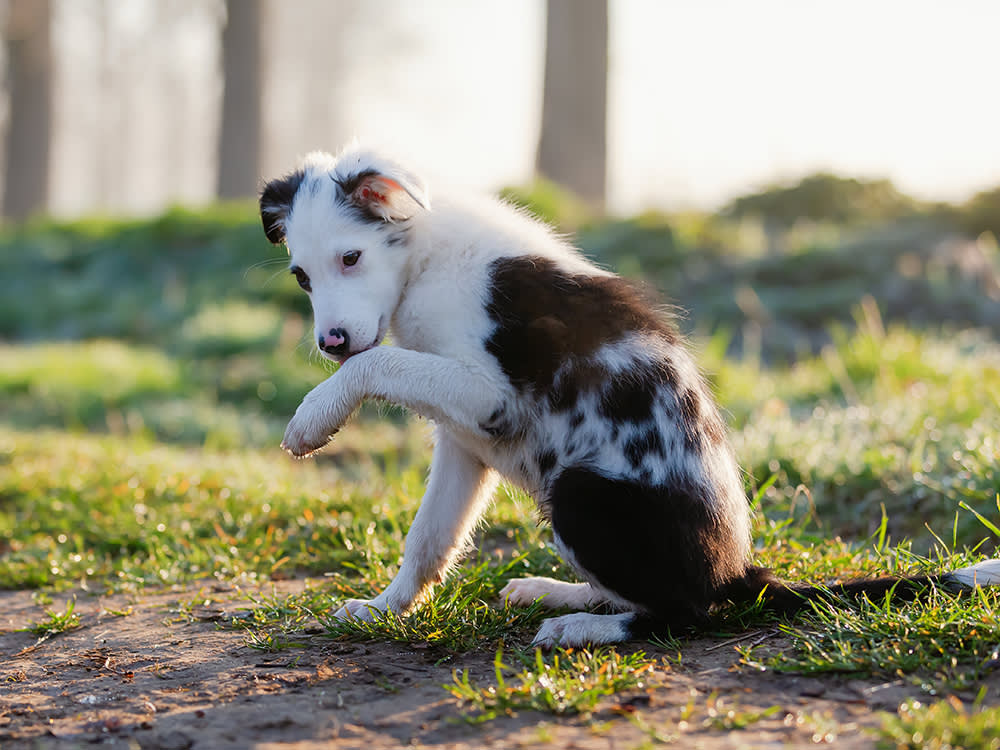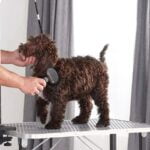Table of Contents
How to treat pet hot spots is a common concern for pet owners. Hot spots, or acute moist dermatitis, are inflamed, infected areas of your pet’s skin that can cause significant discomfort. These painful lesions can appear suddenly and spread quickly, making prompt and effective treatment essential. This guide provides you with seven effective solutions to treat pet hot spots, ensuring quick relief and healing for your furry friend.

Recognizing Hot Spots on Pets
Hot spots can develop rapidly and are typically characterized by red, moist, and irritated skin. Common signs include:
- Intense itching and scratching
- Constant licking or biting of the affected area
- Red, inflamed, or scabbed skin
- Hair loss around the lesion
- Foul odor from the infected area
If you notice these symptoms, it’s important to begin treatment immediately to prevent further infection and discomfort.
How to Clean Pet Hot Spots
Cleaning the hot spot is the first step in treatment. Here’s how to do it:
- Trim the hair around the hot spot to prevent matting and allow air to reach the wound.
- Gently clean the area with a mild antiseptic solution or warm water and a soft cloth.
- Pat the area dry with a clean towel.
Ensure that the area is kept clean and dry to promote healing.
Topical Treatments for Hot Spots
Applying topical treatments can help soothe the skin and prevent infection. Consider these options:
Antibacterial and Antifungal Creams
Use over-the-counter creams that contain antibacterial and antifungal properties to treat the infection and reduce inflammation.
Hydrocortisone Cream
Hydrocortisone cream can reduce itching and inflammation, providing relief for your pet.
Natural Remedies for Pet Hot Spots
Natural remedies like aloe vera gel and coconut oil can soothe the skin and promote healing.
Using an E-Collar to Prevent Scratching
An Elizabethan collar (E-collar) or a pet cone can prevent your pet from scratching, licking, or biting the hot spot, allowing it to heal without further irritation.
Ensuring Proper Nutrition and Hydration
Proper nutrition and hydration are crucial for your pet’s overall health and can aid in the healing process. Ensure your pet is on a balanced diet rich in essential nutrients and provide plenty of fresh water.
Consulting Your Veterinarian for Pet Hot Spots
If the hot spot does not improve with home treatment or if it worsens, consult your veterinarian. They may prescribe antibiotics, stronger anti-inflammatory medications, or other treatments tailored to your pet’s specific needs.
Preventing Future Hot Spots in Pets
Prevention is key to avoiding future hot spots. Here’s how to reduce the risk:
- Keep your pet’s skin and coat clean and dry.
- Regularly groom your pet to prevent matting and detect any skin issues early.
- Use flea and tick preventatives to reduce the risk of skin irritation from bites.
- Monitor your pet’s diet and health, and address any allergies promptly.
FAQs on How to Treat Pet Hot Spots
What causes hot spots on pets?
Hot spots are often caused by excessive scratching, licking, or biting, which can result from allergies, flea bites, skin infections, or other irritations. Moisture trapped in the fur can also contribute to the development of hot spots.
Can I use human antiseptic creams on my pet’s hot spot?
It’s best to use products specifically formulated for pets. Some human antiseptic creams can be too harsh and may cause additional irritation. Consult your veterinarian for recommended treatments.
How long does it take for a hot spot to heal?
With proper treatment, hot spots can start to heal within a few days. However, complete healing may take one to two weeks, depending on the severity of the infection and the effectiveness of the treatment.
Are certain pets more prone to hot spots?
Yes, pets with thick coats, those prone to allergies, and those who swim frequently are more susceptible to hot spots. Regular grooming and preventive care can help reduce the risk.
What should I do if my pet keeps getting hot spots?
Recurrent hot spots may indicate an underlying issue such as allergies or skin infections. Consult your veterinarian to determine the cause and develop a long-term prevention plan.
Can diet affect my pet’s susceptibility to hot spots?
A balanced diet that supports healthy skin and coat can help reduce the risk of hot spots. Ensure your pet receives adequate nutrients and consider supplements like omega-3 fatty acids if recommended by your veterinarian.
Conclusion
Knowing how to treat pet hot spots is crucial for ensuring your pet’s comfort and health. By recognizing symptoms, cleaning the affected area, applying topical treatments, preventing further irritation, and consulting your veterinarian when necessary, you can effectively manage and treat hot spots. Implementing preventive measures can also help reduce the risk of future occurrences, keeping your pet healthy and happy.










